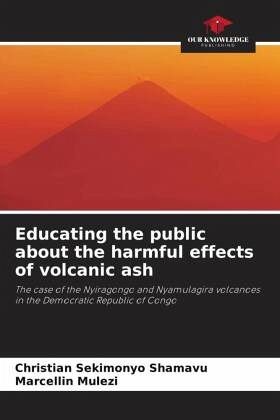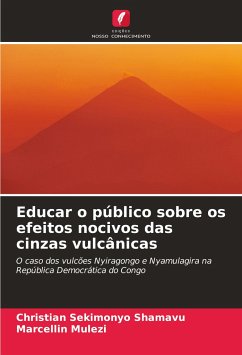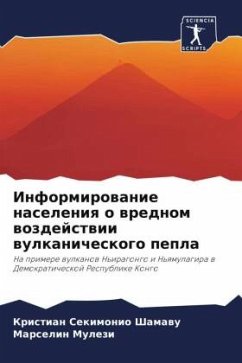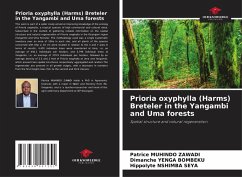
Educating the public about the harmful effects of volcanic ash
The case of the Nyiragongo and Nyamulagira volcanoes in the Democratic Republic of Congo
Versandkostenfrei!
Versandfertig in 6-10 Tagen
30,99 €
inkl. MwSt.

PAYBACK Punkte
15 °P sammeln!
Most volcanic hazards only affect areas within a few kilometers of a volcano. Volcanic ash, however, can affect regions thousands of kilometers from its source. This means that the whole of the DRC could be affected by ash from distant volcanic eruptions, notably the eruptions of the Virunga chain. Unlike the fine ash produced by burning wood, volcanic ash is hard, abrasive, slightly corrosive, electrically charged and does not dissolve in water.Volcanic ash poses a serious threat to aircraft, as it can abrade their surfaces, it can contaminate openings and it can be sucked up and melted by je...
Most volcanic hazards only affect areas within a few kilometers of a volcano. Volcanic ash, however, can affect regions thousands of kilometers from its source. This means that the whole of the DRC could be affected by ash from distant volcanic eruptions, notably the eruptions of the Virunga chain. Unlike the fine ash produced by burning wood, volcanic ash is hard, abrasive, slightly corrosive, electrically charged and does not dissolve in water.Volcanic ash poses a serious threat to aircraft, as it can abrade their surfaces, it can contaminate openings and it can be sucked up and melted by jet engines, causing severe damage. On or near the ground, volcanic ash can reduce visibility, make surfaces slippery, cause roofs to collapse, damage crops and wild plants, clog ventilation systems, corrode metal, contaminate water supplies, irritate or damage eyes, and pose a risk to people with respiratory problems. What can you do about it?














